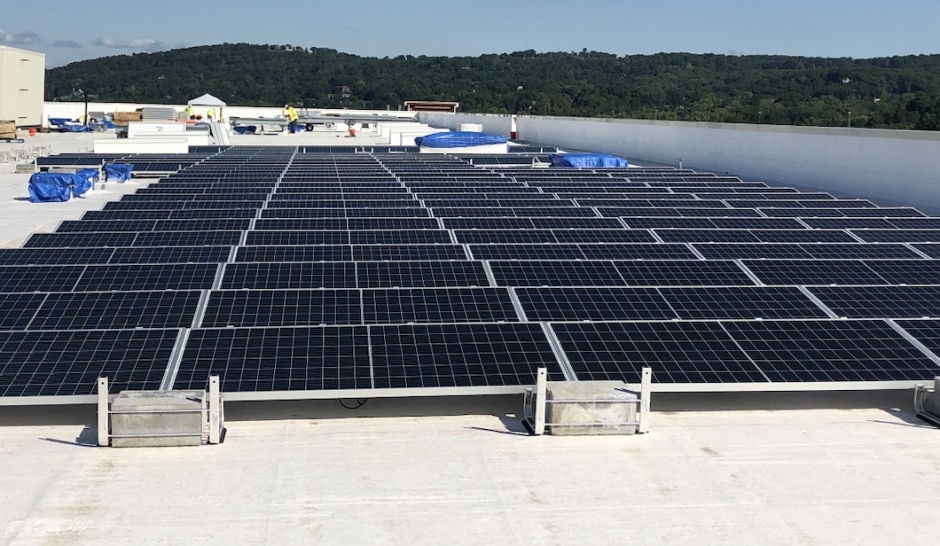Even as the MTA provides sustainable transit services, we recognize the increasing urgency of the climate crisis and the need to act.
Therefore, on April 20, 2023, the MTA committed to reduce the emissions from our own operations by at least 85% by 2040, from a 2015 baseline.
In addition to actions to reduce direct emissions, we are leveraging our contractor and vendor relationships, and scale in the local construction industry, to drive cleaner construction practices.
Reducing operational emissions 85% by 2040
Three strategies enable us to achieve this goal, each of which will be integrated into MTA capital plans.
1. Update facilities
MTA facilities, including train yards, maintenance shops, bus depots, and rail stations, include tens of thousands of assets that support MTA services. Many require repairs or replacements that present opportunities to reduce fossil fuel use and energy consumption.
Some of the things that the MTA is doing to make facilities more sustainable include:
- Upgrading HVAC and lighting systems to be more energy efficient.
- Identifying opportunities to transition away from fossil fuel heating systems where feasible.
- Investing in solar panel installations on facility rooftops.
Learn more about facility improvements in Grand Central Terminal.

2. Transition fleets
MTA fleets include subways, buses, and trains, as well as non-revenue support vehicles. We will minimize dependence on fossil fuels used to power these fleets by transitioning to low- or no-emission alternatives. The most significant example of our fleet transition is the Zero Emission Bus Plan. The MTA has committed to transition 100% of its bus fleet to zero-emission models by 2040.
We plan to transition our light-duty non-revenue fleets to 100% zero-emissions by 2035, and medium- and heavy-duty non-revenue fleets by 2040.
We are also reducing emissions from locomotives on Metro-North and Long Island Rail Road, and replacing diesel non-revenue locomotives in the subway with hybrids.
3. Optimize traction power
We will optimize power distribution systems through retrofits, innovative pilots, and emerging technologies while leveraging design efficiencies and maximizing operational improvements. Examples include energy management, regenerative energy, and storage. About two-thirds of the power used by the MTA is to keep our subways and trains running. To optimize these systems, the MTA will rebuild assets and evaluate emerging technologies to enhance service.
Clean Construction program
In addition to reducing emissions from operations, we’re making our construction practices more sustainable through our Clean Construction program. The magnitude of our system and our capital programs represent an enormous opportunity for the MTA to make our construction practices more sustainable.